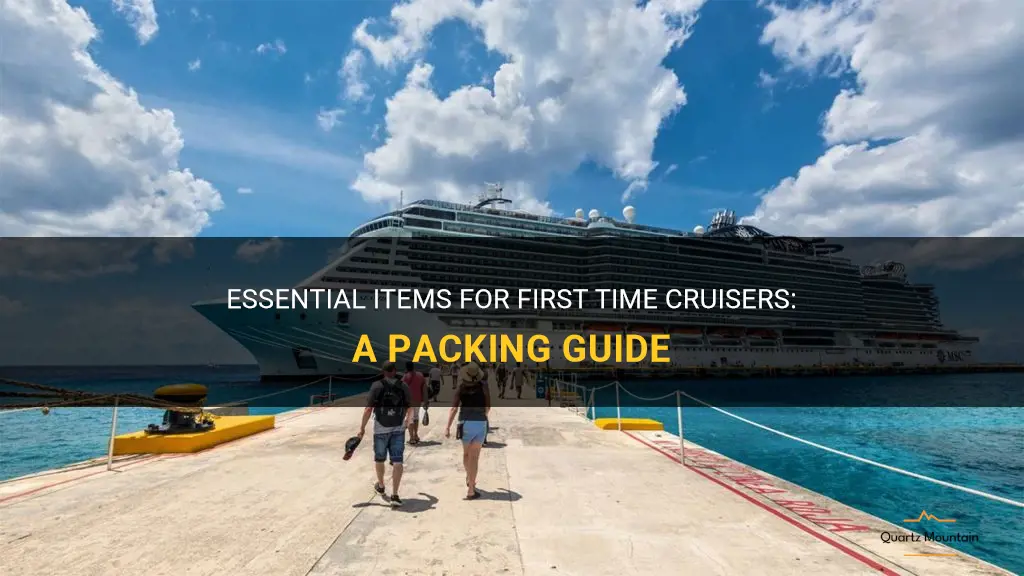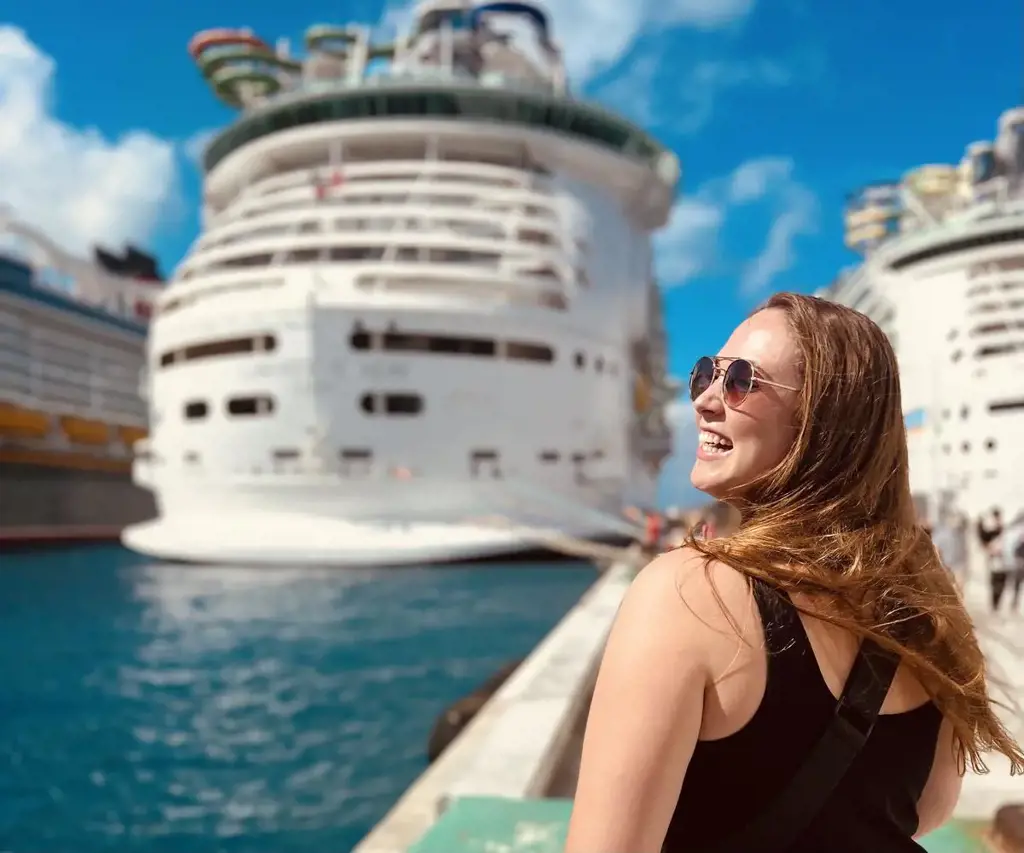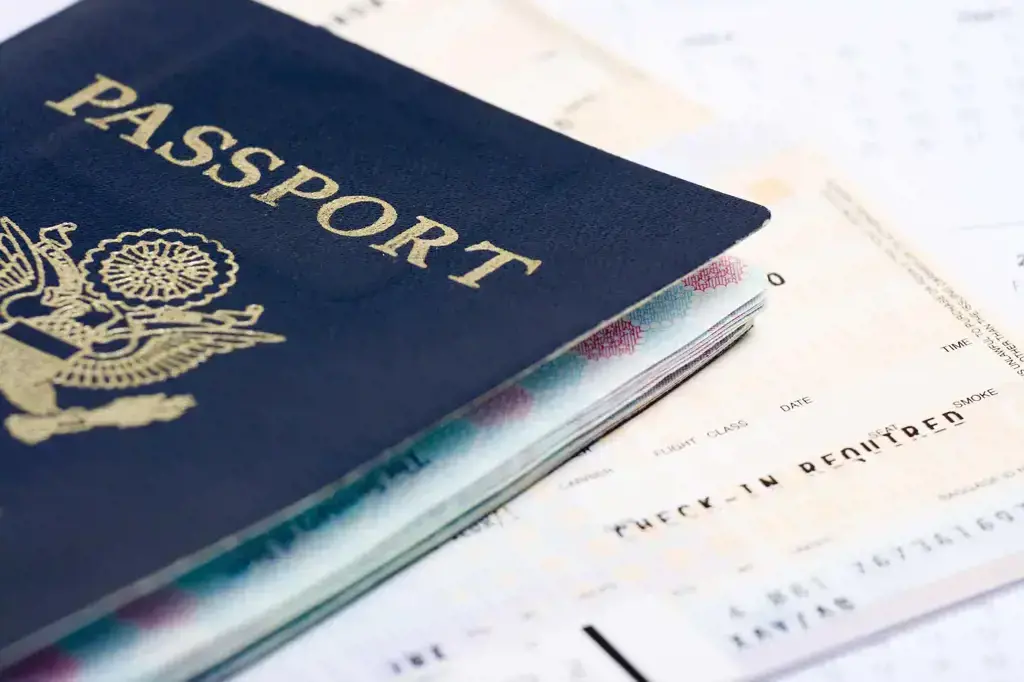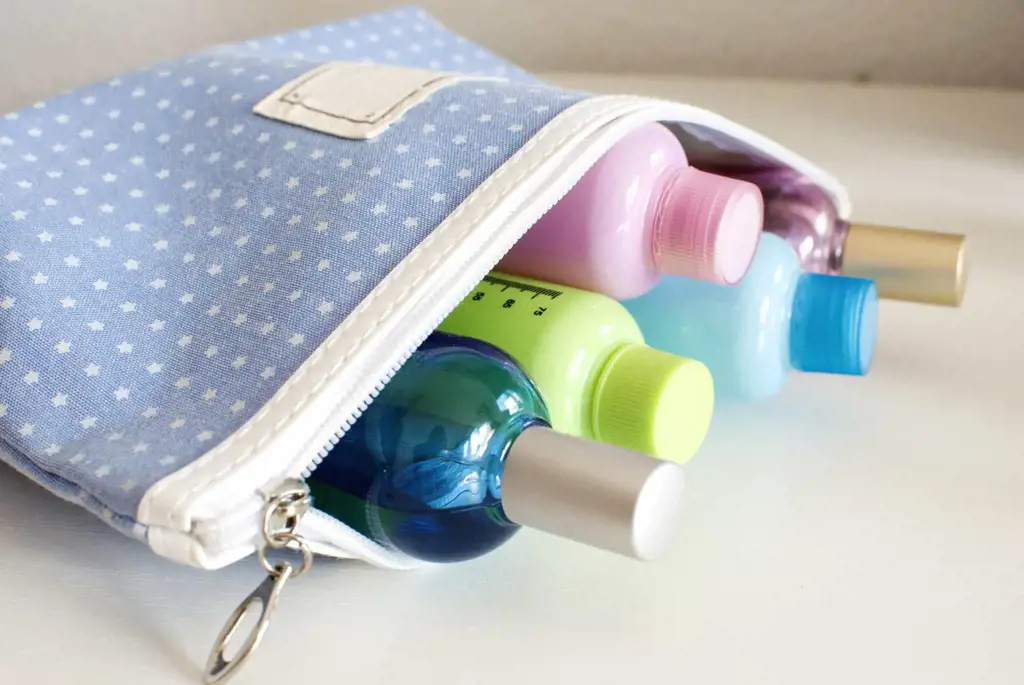
Embarking on a cruise for the first time can be an exciting and somewhat overwhelming experience. With endless activities, dining options, and destinations to explore, it's easy to get caught up in the excitement and forget about the practicalities of packing. But fear not, first-time cruisers! In this packing guide, we will take you through the essential items that you need to have on board to ensure a smooth and enjoyable trip. From sunscreen to swimwear, formal attire to comfortable shoes, we've got you covered. So grab your suitcase and get ready to set sail - adventure awaits!
What You'll Learn
- What are the essential items that first-time cruisers should pack for their trip?
- Are there any specific clothing items or accessories that are recommended for first-time cruisers?
- What are some helpful packing tips for maximizing space and efficiency when packing for a cruise?
- Are there any documents or identification that first-time cruisers should remember to bring on their trip?
- Are there any specific toiletries or personal care items that first-time cruisers should include in their packing list?

What are the essential items that first-time cruisers should pack for their trip?

Cruising has become an increasingly popular vacation choice for many travelers. Whether you are embarking on a short weekend getaway or a longer adventure, packing the right essentials is crucial for ensuring a stress-free and enjoyable trip. For first-time cruisers, it can be overwhelming to figure out what to pack, so here are some essential items to consider bringing along.
- Clothing for all occasions: One of the most important things to pack for a cruise is a variety of clothing options. Be sure to pack comfortable and casual clothes for daytime activities such as swimming or exploring the ship. It's also a good idea to bring some dressier outfits for formal nights or special events on board. Additionally, don't forget to pack some comfortable shoes for walking around the ship and any shore excursions you may have planned.
- Necessary toiletries: While most cruise ships provide basic toiletries such as shampoo and soap, it's always a good idea to bring your preferred products. Pack enough toiletries for the duration of your trip, including items like toothpaste, sunscreen, and any medications you may need. If you have specific dietary or beauty requirements, be sure to bring any special products along as well.
- Travel documents and identification: Before setting sail, it's important to have all the necessary travel documents in order. These may include your passport, visa (if required), driver's license, and any other identification needed. It's also a good idea to bring copies of these documents and keep them in a separate place, just in case. Don't forget to also bring any medical records or insurance information that may be needed during your trip.
- Electronics and chargers: In today's digital age, it's hard to imagine going anywhere without our electronic devices. Make sure to pack your phone, camera, and any other gadgets you may want to use during your cruise. Don't forget to bring the necessary chargers and adapters to keep your devices powered up.
- Entertainment and relaxation: While there are plenty of activities and entertainment options on board a cruise ship, it's always a good idea to bring some items to keep yourself entertained. This could include a good book, puzzle games, or even a deck of cards. Don't forget to pack any necessary medications or relaxation aids such as sleep masks or earplugs, especially if you are a light sleeper.
- Money and necessities: While most cruise ships accept credit cards, it's always a good idea to bring some cash for tipping or small purchases. It's also a good idea to bring a small bag or backpack to use during shore excursions to hold your essentials such as money, ID, and a water bottle. Additionally, be sure to pack any necessary adapters or converters for charging your devices or using electrical outlets in different countries.
- Safety essentials: Lastly, it's important to pack some safety essentials for your cruise. This could include items such as a small first aid kit, seasickness medication, and a travel lock for your cabin door. It's also a good idea to bring a small flashlight in case of any power outages or emergencies.
In conclusion, packing the right essentials for your first cruise is crucial for ensuring a smooth and enjoyable vacation. By considering these essential items such as clothing, toiletries, travel documents, electronics, entertainment, money, and safety essentials, you'll be well-prepared for your adventure. Remember to also check with your cruise line for any specific packing guidelines or restrictions. Bon voyage!
What Clothes Should You Pack for an Alaska Cruise?
You may want to see also

Are there any specific clothing items or accessories that are recommended for first-time cruisers?

When embarking on a cruise for the first time, it is important to be prepared with the right clothing and accessories to make the most of your experience. Cruises often involve a variety of activities, both on and off the ship, so it's crucial to have the appropriate attire for each occasion. Here are some specific items and accessories that are recommended for first-time cruisers.
- Swimwear: One of the highlights of a cruise is the opportunity to relax and lounge by the pool or on the beach. Make sure to pack a few swimsuits that are comfortable and suitable for various activities such as swimming, sunbathing, or participating in water sports. Additionally, don't forget to bring a cover-up or a light shirt to protect yourself from the sun when out of the water.
- Casual wear: During the day, most cruises have a relaxed dress code. Pack comfortable and lightweight clothing suitable for exploring the ship or participating in onboard activities. It's a good idea to bring a mix of shorts, t-shirts, and casual dresses or skirts. Depending on the destination, it's also important to consider the weather and pack accordingly. For cooler destinations, bring a light jacket or sweater.
- Formal attire: Many cruises have formal nights where passengers are expected to dress up for dinner or attending shows. It's recommended to pack at least one formal outfit, such as a suit or cocktail dress. Check with your cruise line to see how many formal nights there will be during your trip.
- Footwear: Cruises involve a lot of walking, so it's important to have comfortable shoes. Bring a variety of footwear including sandals, sneakers, and a pair of dress shoes for formal nights. If you plan on participating in activities like hiking or exploring ports of call, consider bringing sturdy walking or hiking shoes.
- Accessories: Don't forget to pack essential accessories such as sunglasses, a hat, and sunscreen for protection against the sun. If you plan on visiting destinations with a lot of walking or hiking, consider bringing a backpack or a small day bag to carry your essentials. Additionally, a waterproof phone case or a dry bag can be useful for protecting your electronics and important documents while participating in water activities.
- Formal accessories: When packing for formal nights, make sure to bring the appropriate accessories such as ties, bowties, jewelry, and clutch purses. These can help elevate your formal attire and make you feel more confident during these special evenings.
Overall, it's important to pack a well-rounded wardrobe that covers a variety of activities and occasions during your cruise. Be sure to check your cruise line's dress code in advance to ensure you are prepared for any formal nights or specific requirements. By packing the recommended clothing items and accessories, you'll be ready to make the most of your first cruise experience.
What to Pack for a 7-Day Cruise to Mexico
You may want to see also

What are some helpful packing tips for maximizing space and efficiency when packing for a cruise?

Going on a cruise is a wonderful way to relax and explore different destinations. However, one aspect that can cause some stress is packing. When packing for a cruise, maximizing space and efficiency is essential to ensure you have everything you need without being overwhelmed by a cluttered suitcase. Here are some helpful tips to make the most of your packing space and make your cruise experience as smooth as possible.
- Make a list: Before you start packing, make a comprehensive list of everything you need to bring. Divide the list into categories such as clothing, toiletries, electronics, and documents. This will help you stay organized and ensure you don't forget any essential items.
- Plan outfits: Instead of throwing random items into your suitcase, plan your outfits in advance. Mix and match clothing items to create multiple outfits, taking into consideration the weather and activities you will be participating in during your cruise. This will help you avoid overpacking and ensure you have everything you need for each day.
- Roll your clothes: Rolling your clothes instead of folding them can save a significant amount of space in your suitcase. Not only does rolling clothes reduce wrinkles, but it also allows you to fit more items into your luggage. Place heavier and bulkier items at the bottom of the suitcase and roll lighter items on top.
- Use packing cubes and compression bags: Packing cubes and compression bags are excellent tools for maximizing space and organizing your belongings. Packing cubes can help you separate different types of clothing, such as tops, bottoms, and undergarments, while compression bags can reduce the size of bulkier items like jackets and sweaters. These tools also make it easier to find specific items without unpacking your entire suitcase.
- Utilize empty spaces: When packing, be mindful of utilizing empty spaces, such as shoes and gaps between clothing items. Stuff socks into shoes, roll belts and place them around the perimeter of the suitcase, and fill any gaps with small accessories or toiletries. This will help you make the most of every inch of available space.
- Consider the dress code: Check the dress code for the cruise and pack accordingly. Most cruises have a mix of casual, formal, and semi-formal nights, so be sure to pack suitable attire for each occasion. By planning your outfits in advance, you can avoid overpacking unnecessary clothing items.
- Minimize toiletries: Toiletries can take up a significant amount of space in your luggage. Minimize the number of toiletries you bring by opting for travel-sized containers or purchasing items at your destination. Check if the cruise provides essentials like shampoo, conditioner, and soap to further reduce the number of items you need to bring.
- Pack a versatile bag: In addition to your main suitcase, pack a smaller bag that can be used for day trips or as a carry-on. Choose a bag with multiple compartments to keep your belongings organized and easily accessible. This bag can also serve as a beach bag or shopping bag, saving you from having to bring additional bags for various activities.
By following these packing tips, you can maximize space and efficiency when packing for a cruise. Remember to plan ahead, utilize organizational tools, and be mindful of what you truly need. Packing smartly will not only make your cruise experience more enjoyable but also eliminate unnecessary stress and hassle. Have a fantastic time on your cruise!
The Ultimate Guide to Packing for an All-Inclusive Bahamas Vacation
You may want to see also

Are there any documents or identification that first-time cruisers should remember to bring on their trip?

Are you planning your first-ever cruise vacation? If so, there are a few important documents and identification items that you should remember to bring with you. These items are necessary for various purposes, including check-in procedures, onboard purchases, and various ports of call activities. In this article, we will discuss the essential documents and identification that first-time cruisers should remember to bring on their trip.
Passport or other acceptable ID:
One of the most important documents that you should bring on your cruise is your passport. If you are traveling internationally or to countries that require a passport, it is essential to have it with you. Make sure your passport is valid for at least six months after your planned return date. If you are taking a domestic cruise, you may be able to bring an alternative form of identification such as a driver's license or birth certificate. However, it is always advisable to carry a passport as it is universally accepted and provides a higher level of convenience and security.
Boarding Pass and Printed Cruise Documents:
Before your cruise, the cruise line will provide you with a boarding pass and other cruise documents. These documents typically include essential information such as your cabin number, dining arrangements, and itinerary details. It is important to print these documents and bring them with you for check-in at the cruise terminal. Some cruise lines also provide digital boarding passes, which you can save on your smartphone or tablet. However, it is always a good idea to have a printed copy as a backup in case of technical issues or connectivity problems.
Visa or Travel Permits:
If you are traveling to countries that require a visa or travel permits, it is crucial to obtain them before your cruise. Depending on your nationality and the countries you plan to visit, you may need to apply for visas in advance. Research the visa requirements for each port of call on your itinerary and ensure that you have obtained the necessary permits before embarking on your cruise.
Credit Card and Cash:
While most of your onboard expenses will be charged to your onboard account, it is still essential to bring a credit card or some cash for emergencies and incidental expenses. Some cruise lines accept cash for onboard purchases, while others require a credit card for all transactions. Check with your cruise line to see what their policy is and plan accordingly. It is always a good idea to carry a small amount of local currency for each port of call, as some vendors may not accept credit cards.
Travel Insurance:
Although not a mandatory document, travel insurance is highly recommended for all cruisers. Travel insurance protects you against unforeseen events such as trip cancellations, medical emergencies, or lost luggage. Make sure to have a copy of your travel insurance policy and emergency contact numbers easily accessible during your trip. Having travel insurance gives you peace of mind and ensures that you are protected in case of any disruptions or emergencies.
In conclusion, first-time cruisers should remember to bring their passport or other acceptable identification, boarding pass and printed cruise documents, necessary visas or travel permits, credit card and cash, and travel insurance. These documents and identification items are crucial for various aspects of your cruise vacation, from check-in procedures to onboard purchases and activities at ports of call. Remember to double-check the requirements of your specific cruise line and itinerary to ensure a smooth and hassle-free cruise experience. Bon voyage!
10 Essential Cruise Hacks: What to Pack for a Stress-Free Vacation
You may want to see also

Are there any specific toiletries or personal care items that first-time cruisers should include in their packing list?

When going on a cruise for the first time, it's important to pack the right toiletries and personal care items to ensure a comfortable and enjoyable trip. While most cruise ships provide basic toiletries such as soap and shampoo, there are a few items that first-time cruisers may want to consider bringing along. Here are some specific toiletries and personal care items that can enhance your cruise experience:
- Sunscreen: Whether you're lounging by the pool or exploring tropical destinations, sunscreen is a must-have item. The sun can be harsh out on the open sea, and it's important to protect your skin from harmful UV rays.
- Motion sickness remedies: If you're prone to motion sickness, it's a good idea to bring along some motion sickness remedies. This can be in the form of medication or natural remedies like ginger candies or wristbands. Consult with your doctor before taking any medication for motion sickness.
- Insect repellent: Depending on your cruise itinerary, you may encounter mosquitos or other insects during excursions. It's a good idea to pack insect repellent to protect yourself from bug bites.
- Travel-sized toiletries: While most cruise ships provide basic toiletries, they may not be to your liking or may run out during the trip. It's a good idea to pack travel-sized toothpaste, shampoo, conditioner, and other personal care items to ensure that you have an adequate supply throughout your cruise.
- Personal grooming items: Don't forget to pack your own personal grooming items like a toothbrush, floss, and razor. While cruise ships typically provide these items, they may not be of the same quality as your preferred brands.
- Medications: If you take any prescription medications, be sure to pack enough for the duration of your cruise. It's also a good idea to bring a copy of your prescription or a note from your doctor, as some countries may require proof of medication.
- First aid kit: It's always a good idea to have a basic first aid kit on hand, especially when traveling. Pack items like adhesive bandages, antiseptic ointment, pain relievers, and any other medication you may need for minor ailments.
- Hairdryer: While most cruise ships provide hairdryers, they may not be as powerful as your own. If you're particular about your hair or have specific styling needs, consider bringing your own hairdryer.
- Earplugs and eye mask: The sound of the ocean and the natural light filtering through the curtains can be soothing for some, but for others, it may interfere with sleep. If you're a light sleeper or simply prefer complete darkness and quiet, earplugs and an eye mask can help you get a good night's sleep.
- Wet wipes or hand sanitizer: Keeping your hands clean is essential when on a cruise, as you'll be in close proximity to many people. Pack some wet wipes or hand sanitizer for quick and convenient hand hygiene throughout the day.
Remember to check the cruise line's policies regarding toiletries and personal care items, as there may be restrictions on certain items. It's also a good idea to pack all liquid toiletries in leak-proof containers and place them in a Ziploc bag to prevent any spills or leaks during your journey.
By packing these specific toiletries and personal care items, first-time cruisers can ensure a comfortable and enjoyable trip. Remember to check with your cruise line regarding any specific requirements or restrictions, and don't forget to relax and enjoy your time at sea!
Essential Items to Pack for a Trip to Rocking Horse Ranch
You may want to see also
Frequently asked questions
When packing for your first cruise, there are a few essential items you shouldn't forget. First and foremost, make sure to bring all the necessary travel documents, including your passport or identification card and boarding pass. Additionally, it's important to pack enough clothes for the duration of your cruise, taking into account both casual and formal attire. Don't forget to pack toiletries, medications, and any necessary adapters or chargers for your electronics. Finally, it's always a good idea to bring a small day bag and a refillable water bottle for excursions and exploring the ship.
Most cruise lines provide towels for use by the pool and on the ship, so there's generally no need to bring your own beach towels. However, if you plan on participating in shore excursions that involve beaches or water activities, it's a good idea to pack your own towels. This way, you can ensure you have a clean and dry towel to use throughout the day.
Most cruise lines have policies regarding bringing outside food and beverages on board. While policies vary, it's common for cruise lines to prohibit guests from bringing large quantities of food or beverages on board, especially alcoholic beverages. However, some cruise lines may allow guests to bring a limited amount of non-perishable snacks and non-alcoholic beverages for personal consumption in their staterooms. It's best to check with your specific cruise line to understand their policies regarding outside food and drink.
When preparing for excursions on a cruise, it's important to pack a few key items. First and foremost, make sure to bring comfortable walking shoes. Depending on the destination and planned activities, it's also a good idea to pack items like sunscreen, hats, sunglasses, and insect repellent. If you're participating in water activities, consider bringing a swimsuit and a waterproof bag for your belongings. Lastly, don't forget to bring any necessary travel documents, such as passports or identification cards, as well as your shore excursion tickets.







